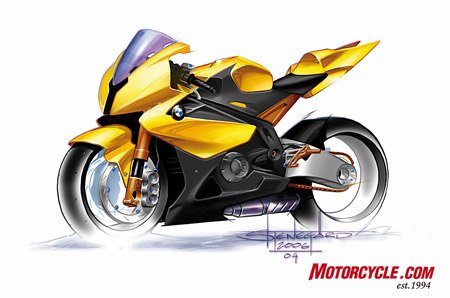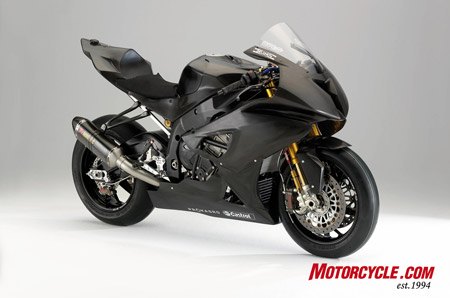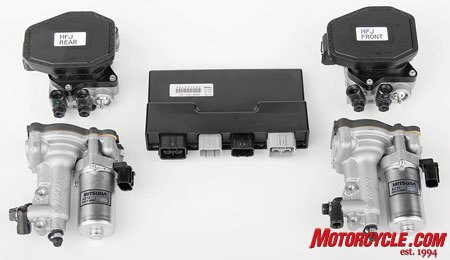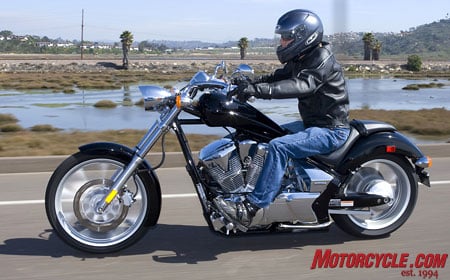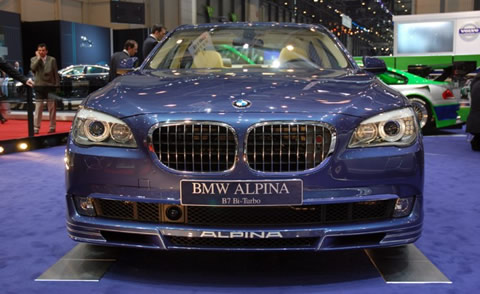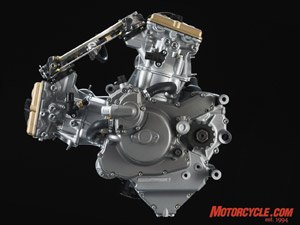
Torrance, California, March 14, 2002 -- "A foolish consistency," said Ralph W. Emerson, "is the hobgoblin of little minds." One example that springs to mind is the overlookage of this particular motorcycle by the mainstream moto-press. When it came time to do the "Naked Bike" story at Motorcyclist last year, the new 1150R got left out because, er, I don't know why, really, but it was in good company as those guys didn't want to include the Triumph Speed Triple either. (Yours truly lobbied that both bikes should be in the mix, which is probably, come to think of it, precisely why they were left out.) In any case, I'd been wanting to ride this 1150R ever since the big makeover for '01, and only in the last couple of weeks finally got the chance to do so. It was worth the wait.
Count on a "Hooligan Bike Shootout" from that same publication (God am I sorry I ever applied that word to a motorcycle...), and the BMW will probably be left out of it, too, as it's hard for many people to wrap their mind around the concept of a BMW having anything to do with "Hooliganism." Well, all I can say is that the guys who used to flog their old boxer BMW's up and down Mt. Palomar when I was a lad, were--I hope still are--the dictionary definition of hooligan. Them were the days...
Then there's the big "Performance Cruiser" category that's lately in vogue--your Yamaha Warriors, Harley-Davidson V-Rods, etc.--and if I ran the ship (whoa, I finally do run this one!), this BMW would've been a contestant in that category too--and it would've won it if I'd been doing the judging. That's right. Why not? It's a big air-cooled, pushrod twin, isn't it? Yes it is, and with its own funky look. Should it be disqualified because its funky look isn't exactly the same as the funky look shared by the others? Should it be left out because it's also, unlike any of them, a highly functional motorcycle you could circle the globe upon? That's the part they left out at the big magazines: performance cruisers are fine to take to lunch or down to the beach, but they sit in the garage when it's time for the long commute or the weekend ride to Grandma's. The reason why is perfectly simple: the footpegs on those bikes are in a stupid place. StoooPid.
Ever wonder why, when gazing upon a statue of Alexander the Great astride his warhorse, or General Lee upon Traveller, why saddlemakers never thought to get a couple two-by-fours and stick the stirrups out around the horse's chin? Because it would be stupid, that's why. But that's exactly the seating position enforced by all the performance cruisers. When you ride a horse, you use your legs to absorb shocks and to control the animal; the same applies to motorcycles. No point in arguing with me on this one. One of the saddest phenomena of modern times is that millions of asses are suffering needlessly because Dennis Hopper and Peter Fonda were morons 30 years ago. Stupid. (Rearsets are in the works for our V-Rod, which, apart from the stupid footpegs, I love dearly.)
Where was I? Right, BMW's R1150 GS has won tons of deserved praise, but the R generally gets bupkus. The GS has that rugged adventurous look, but as one who has personally suffered greatly as a result of falling for the GS's Marlboro Man appearance, I can tell you it is way too big and heavy to take off-road unless you're being followed by a large chase vehicle with winch and orthopedist. Don't be fooled, the GS is a street motorcycle, and on the graded dirt roads it can tackle, I have no doubt the R will perform every bit as well. (Heck, I snapped a frame mount off one of the first GS's years ago when I hit a not-so-big bump not so hard. Rider abuse, BMW said, and vowed to strengthen that mount. Then, Hackfu broke one in the same spot last year.)
In any case, I've learned the hard way that I'm a pavement guy. On asphalt, the GS is an amazingly agile beast--but the R is even better. It weighs a bit less, and sits lower on its most excellent suspension (which is also nice if you're on the short side like me; it's much easier to swing your stubby little leg over the R). And if we're still talking about performance cruisers, none of those things will see the BMW after about turn two on Racer Road; as a matter of fact the R will give all-out sport bikes fits under a capable pilot.
As with the Speed Triple, Honda 919, et al, the magic ingredient is the "handlebar." The wide tubular thing on the BMW gives you the dirt-bike leverage you need to shove the R into corners (actually, steering is light and quick), and nice, naturally positioned footpegs back up the feeling that nothing you can't handle is going to happen. Is it just me, or do bikes with heavy, longitudinal crankshafts possess some sort of gyroscopic force that also reinforces that omnipotent feeling? (ST1100 Hondas feel that way, too.) Through corners, centerstand and foot pegs dragging, the R always wants you to get back on the throttle. Don't worry. (We could've jacked up the rear with the hand-crank preload adjuster, but didn't want to stop.) In faster sweepers, the R is precise, stable, and on time like a Mussolini train.
Attached to the other end of the throttle cable is the same 1130cc flat twin used in the GS, producing a claimed 85 horsies. (Soon as we get our dyno up again, we'll post the chart.) Torque is claimed to be 71 foot-pounds, with 66 of them available between 3000 and 6500 rpm, all of it controlled by the latest Motronic 2.4 engine management system. At no time do you feel like you're motoring that hard, but you can't help noticing Mini's working the 118-horse, considerably lighter Speed Triple pretty hard--and not exactly drawing away quickly. The Achilles heel used to be the crunchy, five-speed gearbox. Now with the 6-speed close-ratio Getrag, the R shifts like a real-live sportbike, ye do nae need the clutch if you're in a hurry. (And when aren't you on a motorcycle?)
One of the few criticisms you could lodge against this bike is that the boxer twin has none of the aural flair of say, an Italian twin, or a Triumph triple; its exhaust note is more the flat drone of an aircraft engine, and it doesn't even change much when the power really comes on at about 5000 rpm. Adjust your attitude, though, and you can learn to love these motors. They remind me of Steffie Graff; big nose, not exactly the classic beauty queen--love her all the more because of her inner strength, y' know?
"How you like the suspension?" Mini asks when we stop.
"Hard to say, that road's so smooth," I say.
"Like hell," he says, "the Triumph was skittering all over the place..."
It's true. Commuting up and down the superslab, the R is a stately pleasure dome with a luxurious, some would say Cleopatraesque ride. Get rough with it in the twistiness, though, and Paralever and Telelever conspire to give excellent control. (Rebound's adjustable at each end, too, if that makes you feel better.)
About them brakes. Our test bike has the new, optional Integral ABS--which is like power-assisted ABS, sort of--but you have to really give a squeeze to feel the assist, at which point you stop really, really hard. In everyday use, the system works well, and in an emergency sitch, ABS will save your bacon and we highly recommend it, wish more bikes had it.
For backroad banzai attacks, however, the Integral system saps too much feel, and the slight delay getting to full boost makes for some hair-raising moments. So, if you ride where it rains a lot, or if you're more casual tourist than backroad maniac, maybe go on and spring for the ABS. If you're like us, save the money and the 9.6 pounds, and enjoy the standard EVO brakes--this year with bigger, 12.6-inch rotors and recalibrated hydraulics for reduced lever effort, BMW says.
Back to the superslab. Yes, the ride is sweet and so's the
seat, and if you're tall you can order a saddle that ensconces you 31.5 inches from the ground instead of the standard 30.3 inches (feels lower). A thicker-padded passenger seat is on the option sheet, too, for those whose passengers don't carry plenty of their own. The old RS mounted its handlebars in rubber, to reduce vibration, but the R's bar mounts up solid. It is vibey around 4000 rpm and 80 mph in top gear, but it's more a "Hey-I'm-riding-a-motorcycle!" vibe than an annoying one that puts your hands to sleep. Never put mine to sleep, at least, but the mirrors are sometimes too blurry to tell if that car has a light bar or not. It smooths out nicely at 90, though, and then you'll know for sure about the lightbar thing.
Instruments are nicely legible and we like the analog clock, which belongs in an expensive car (BMW makes them, too). Whip off the tall windscreen pictured (takes five minutes),and the instrument cluster clears enough wind by itself to make 100mph cruising problem-free. BMW sells a shorter screen, too; this tall one's blustery for 5'7" persons.
Any of those "power cruisers" or "nekkid bikes" or "hooligans" offer heated grips? First time I heard of them, I figured they were strictly for the Iron Butt Rally/Chicago ride-year-round crowd, but you grow to love toasty grips even in sunny Southern California. After dark, when it's too warm for an electric vest but too cold to ride nude, those warm grips are just like standing with your hands in front of a nice campfire--a psychological lift as well as a physically comforting one.
Have I yet given off the impression that we really, really like this BMW? Because I'm trying to. As they say on the late-night infomercials, HOW MUCH WOULD YOU EXPECT TO PAY? Without the Integral ABS, the R goes for an amazingly reasonable $9,999--and the hard bags, which allow you to travel in grand style, are $698.51 the pair. Pop the R up on the (standard) centerstand, and you can do your own valve adjustments in the Motel 6 parking lot. All your Beemers come with three-year, 36,000-mile warranties, natch.
Throw off your preconceived notions about BMWs, would you? This bike is Unclassifiable."Power cruise," ride "naked," be a "hooligan," embarrass "sportbikes," go "sport-touring"; this motorcycle does it all, and while it's doing whatever it is, it's aesthetically as well as functionally a beautifully lashed-together piece of tackle. Yo, is $9,999 a misprint or what? Has the mark collapsed? Bargain with a capital "B." Sweet. Two thumbs up.







